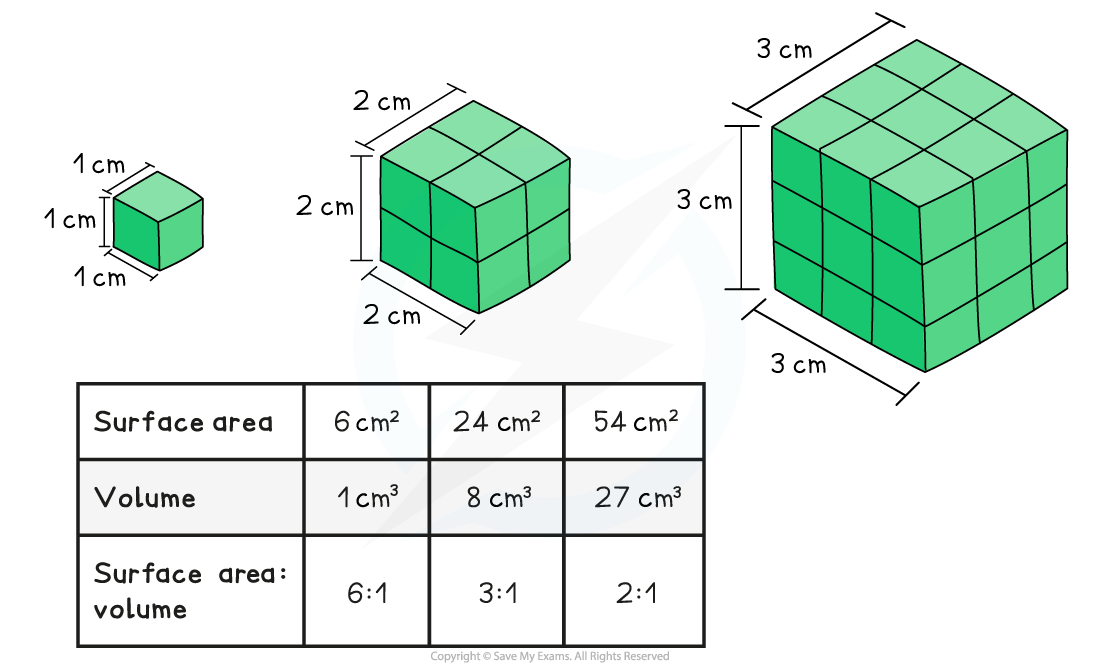Surface Area to Volume Ratio
- For cells to survive, metabolic reactions must be occurring, these reactions depend on:
- Materials constantly being exchanged across the plasma membrane
- The volume/mass of cytoplasm (as this is where the reactions take place)
- As organisms increase in size their SA:V ratio decreases
- There is less surface area for the absorption of nutrients and gases and secretion of waste products
- The greater volume results in a longer diffusion distance to the cells and tissues of the organism
- Thus the rate at which substances (e.g. oxygen and heat) are exchanged across the plasma membrane is dependent on the surface area (the larger the surface area the more substances are exchanged)
- The rate at which a cell metabolises is dependent on the mass/volume of the cytoplasm (the larger the mass/volume the longer it takes for metabolic reactions to occur)
Limitations to cell size
- Single-celled organisms have a high SA:V ratio which allows for the exchange of substances to occur via simple diffusion
- The large surface area allows for maximum absorption of nutrients and gases and secretion of waste products
- The small volume means the diffusion distance to all organelles is short
- A consequence of the SA:V ratio is that cells cannot grow bigger indefinitely. Once the ratio becomes too small, growth must stop and the cells must divide
- To overcome this, large multicellular animals and plants have evolved adaptations to facilitate the exchange of substances between their environment
- They have a large variety of specialised cells, tissues, organs and systems
- Eg. gas exchange system, circulatory system, lymphatic system, urinary system, xylem and phloem

As the size of an organism increases, it’s surface area : volume ratio decreases. Notice for this particular shape the distance between the surface and the centre increases with size.
Exam Tip
Remember the rate of metabolism is dependent on the mass/volume of the cell whereas the rate of exchange is dependent on the surface area.